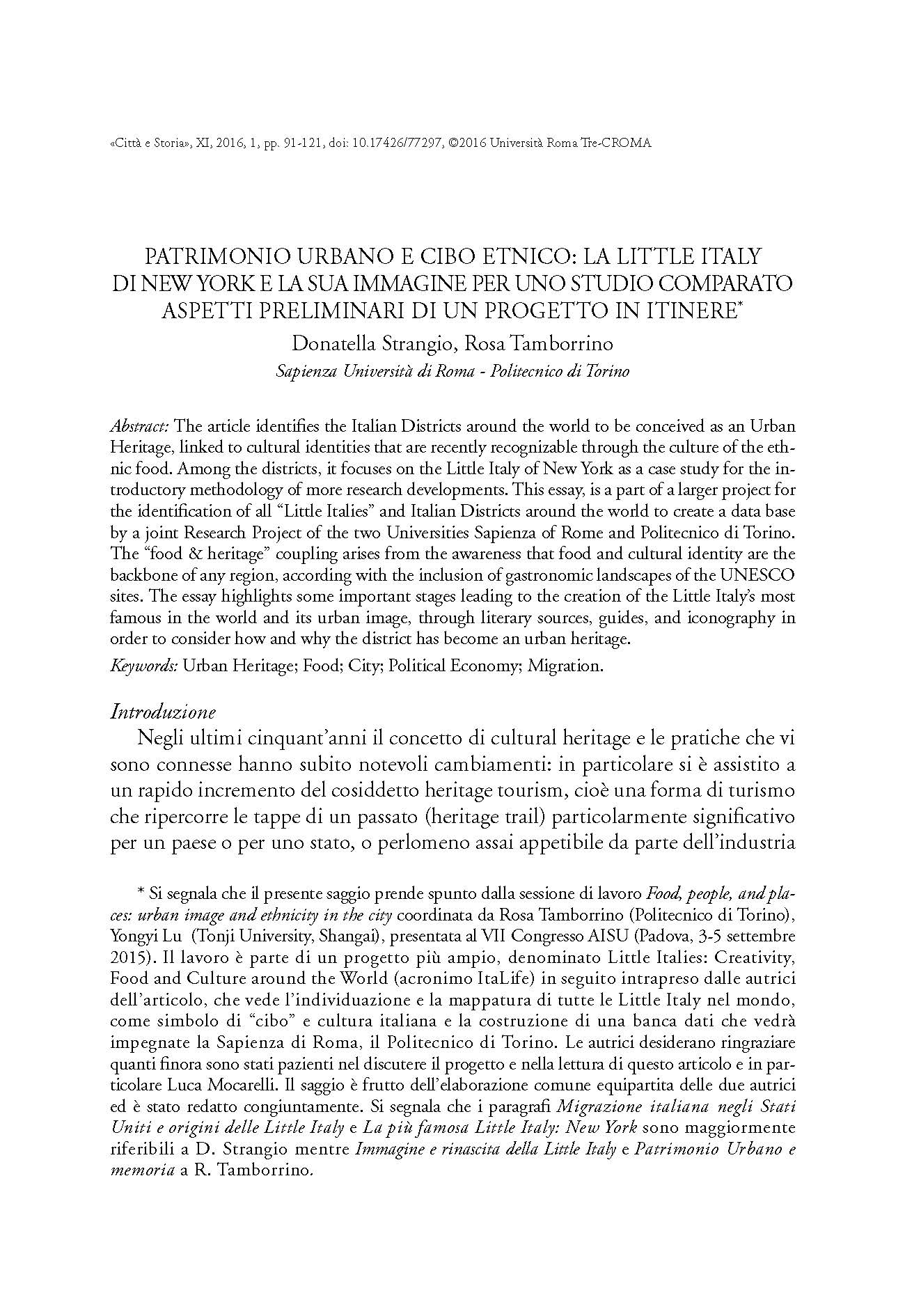Patrimonio urbano e cibo etnico: la Little Italy di New York e la sua immagine per uno studio comparato. Aspetti preliminari di un progetto in itinere
6,00 €
The article identifies the Italian Districts around the world to be conceived as an Urban
Heritage, linked to cultural identities that are recently recognizable through the culture of the ethnic
food. Among the districts, it focuses on the Little Italy of New York as a case study for the introductory
methodology of more research developments. This essay, is a part of a larger project for
the identification of all “Little Italies” and Italian Districts around the world to create a data base
by a joint Research Project of the two Universities Sapienza of Rome and Politecnico di Torino.
The “food & heritage” coupling arises from the awareness that food and cultural identity are the
backbone of any region, according with the inclusion of gastronomic landscapes of the UNESCO
sites. The essay highlights some important stages leading to the creation of the Little Italy’s most
famous in the world and its urban image, through literary sources, guides, and iconography in
order to consider how and why the district has become an urban heritage.
The article identifies the Italian Districts around the world to be conceived as an Urban
Heritage, linked to cultural identities that are recently recognizable through the culture of the ethnic
food. Among the districts, it focuses on the Little Italy of New York as a case study for the introductory
methodology of more research developments. This essay, is a part of a larger project for
the identification of all “Little Italies” and Italian Districts around the world to create a data base
by a joint Research Project of the two Universities Sapienza of Rome and Politecnico di Torino.
The “food & heritage” coupling arises from the awareness that food and cultural identity are the
backbone of any region, according with the inclusion of gastronomic landscapes of the UNESCO
sites. The essay highlights some important stages leading to the creation of the Little Italy’s most
famous in the world and its urban image, through literary sources, guides, and iconography in
order to consider how and why the district has become an urban heritage.

